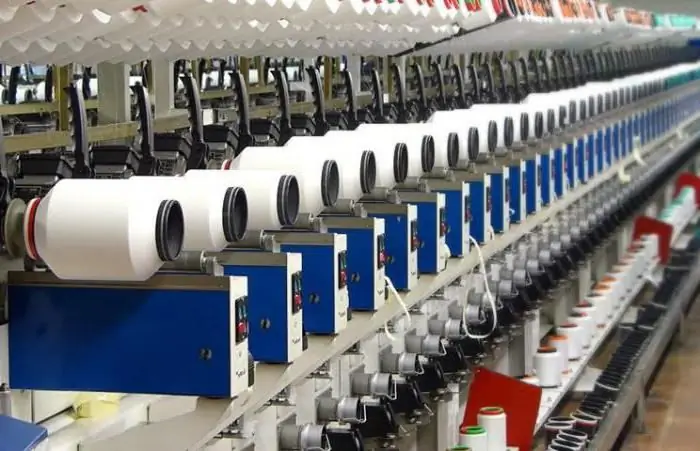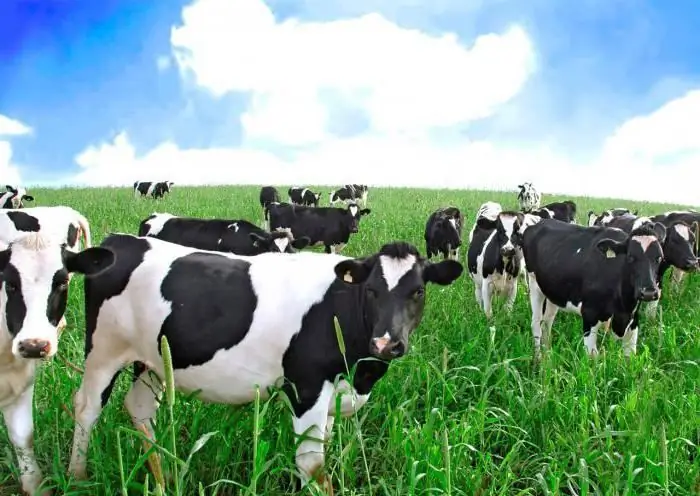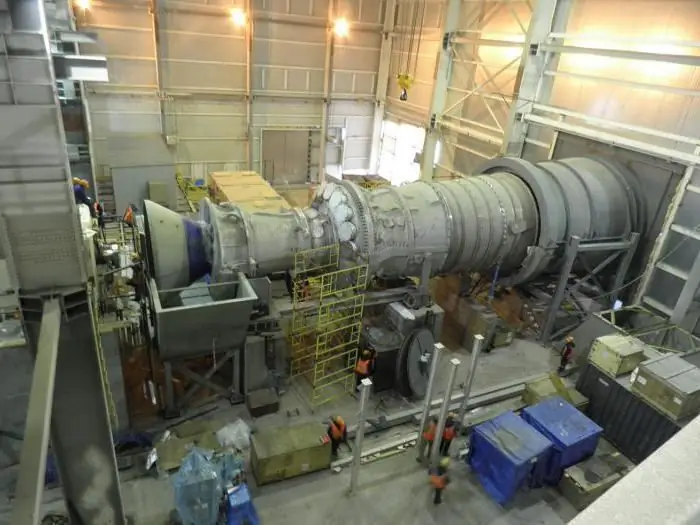2026 Author: Howard Calhoun | [email protected]. Last modified: 2025-01-24 13:10:41
Trinity Worsted Factory is one of the best domestic textile enterprises. A large-scale modernization carried out in the 2000s made it possible to switch from the production of military cloth to the production of high-quality smooth woolen fabrics and knitting woolen yarn. The company is located in the city of Troitsk near Moscow.
Mystery of Foundation
The fact that the Troitskaya factory is one of the oldest Russian enterprises in the textile industry is beyond doubt. However, local historians and historians disagree on when it was founded. According to the official position displayed on the memorial plaque at the entrance, the date of creation of the manufactory is 1797.
At the same time, a document was found dating back to 1751, in which the landowner Yakov Evreinov received permission from Empress Elizabeth I to build a factory at his own expense. By the way, the manufactory was mentioned more than once in the list of factories in the Moscow province both in 1773 and in 1776. But it is not mentioned in later lists. Thus, the age of the Troitskaya factory can bealmost half a century older than conventional.

Becoming
It should be clarified that until the beginning of the 19th century it was a small local-scale paper spinning production, consisting of several machines. Its growth began in the 1800s: historians attribute the appearance of capital workshop buildings and a dam on the Desna River to this period.
In the middle of the 19th century, the Prokhorov merchants bought the manufactory. As they would say today, it became part of the "holding", which included two more factories - in the village of Laptevo and the city of Naro-Fominsk. First, on the right bank of the Desna River, apparatus, spinning buildings, and a dyehouse were built. At the same time, a spacious warehouse, a barracks for the living of working people and a artisan house were built.
Troitskaya factory was a paper-spinning factory. The dam was equipped with a water wheel that set in motion the working mechanisms of looms and other equipment. For example, a sizing machine was used to impregnate the threads with glue. Subsequently, the energy of the wheel was replaced by steam, and then by electricity.
Pre-revolutionary period
In 1865, significant changes awaited the factory. The new owner from Germany, Eduard Kupfer, decided to change the profile of his products. Instead of cotton fabrics, the production of a more sought-after product, army cloth, was launched. Government connections made it possible to obtain lucrative orders, which guaranteed the stable operation of the enterprise, despite possible economic downturns. Wool for felting was purchased from local farms, since at that timesheep breeding in Russia was well developed.
In just a few years, the number of employees exceeded 400, which indicates a large scale of production. Considerable attention was paid to education. In 1877 Kupfer organized the work of the school. According to archival data, in the first academic year, 12 children of craftsmen and workers, as well as 18 children from neighboring villages, studied here. Subsequently, their number has grown exponentially. By the end of the 19th century, the assortment of the Troitskaya worsted factory expanded due to the development of the production of drape, baize and yarn.
In 1890, the company was taken over by the manufacturer Risch. By 1914, the team consisted of half a thousand workers, and productivity reached about 500,000 meters of coarse cloth and over 160 tons of wool yarn.

The first years of Soviet power
The revolutionary struggle did not pass by the Trinity factory. Cells of Bolsheviks, Mensheviks, and Green Guards operated at the enterprise. Conflicts often broke out. In the end, due to ideological differences, lack of raw materials and fuel, work was suspended.
In the early 1920s, as the general situation improved, production was resumed. 350 workers maintained 60 looms. In order to attract labor, housing construction begins. By 1927, the team already consisted of 800 people, 20 houses were erected, and the population of the workers' settlement exceeded 1,500 people.
However, the assortment of the factory was poor. For example, in 1940, only one kind of cloth and oneCheviot variety (fluffy dense woolen fabric). With the beginning of the war, the team switched to the production of material for sewing overcoats. In 1946, reconstruction began, equipment was replaced. The main activity was the manufacture of thin drape. Also sewn here: cloaks, hats, caps, scarves, mittens, socks, etc.

Further development
The next modernization of production began in the 1970s. The factory was reoriented to the production of worsted products, mainly combed carded sliver. By this time, the enterprise became one of the leaders in the textile industry in Russia. The population of Troitsk also grew, reaching 20,000 inhabitants. On April 23, 1977, the workers' settlement was transformed into a city.
With the collapse of the USSR, the demand for traditional products fell. The management was faced with the task of diversifying production, finding those niches that would allow the factory to maintain its activity. The solution was found - it's yarn. The Troitsk Worsted Factory gradually won the trust of the consumer, eventually becoming the leader in this segment. By the way, 90% of products are sold in the domestic market.

Products
Today the company offers threads for machine and hand knitting of various types and colors from materials such as:
- sheep wool;
- camel hair;
- mohair;
- alpaca wool;
- angora;
- merino wool;
- mercerized cotton;
- bamboo fiber;
- goat down;
- linen;
- acrylic, nylon, lyocell, capron, viscose, polyamide, lycra.
Of course, this is not the whole range. The joint-stock company also offers:
- wool for felting;
- wool on bobbins;
- bed linen;
- combed tape;
- pillows, blankets;
- woolen shawls;
- fittings.
Technologists and designers of the enterprise are trying to follow the current market trends and promptly introduce new product SKUs. The quality of input (raw materials) and output (finished products) is controlled by factory laboratories.

Branch
Since 2011, the Borsk Wool Primary Processing Factory (BFPOSH) has been a subsidiary. This made it possible to build a complete line for processing incoming raw materials, from washing wool to obtaining a finished product.
BFPOSH has 3 workshops of the main production - raw material, sorting, washing - and auxiliary production (steam-boiler, treatment facilities, water pump, repair departments, storage facilities) with a total area of 15,000 m2. The company processes all types of sheep wool: fine merino, fine blended, semi-fine Tsigai, cross-bred, cross-bred, semi-fine blended, semi-coarse and coarse.
Recommended:
Electronic industry of Russia. The development of the electronics industry

The domestic electronics industry has passed its 50th anniversary. It originates in the USSR, when the formation of leading research centers and high-tech enterprises took place. There were ups and downs along the way, and oblivion
Clothing industry as a branch of light industry. Technologies, equipment and raw materials for the clothing industry

The article is devoted to the clothing industry. The technologies used in this industry, equipment, raw materials, etc. are considered
Dairy industry in Russia. Dairy industry enterprises: development and problems. Dairy and meat industry

In the economy of any state, the role of the food industry is huge. Currently, there are about 25 thousand enterprises in this industry in our country. The share of the food industry in the volume of Russian production is more than 10%. The dairy industry is one of its branches
Industry of Latvia: textile, clothing, amber craft. Riga Carriage Works. Food industry enterprises

Latvian industry is a topic requiring special consideration. All its segments will be studied in this article
Power industry - what is it? Development and problems of the electric power industry in Russia

Electricity is one of the most important industries in the world. What exactly do you know about her?

